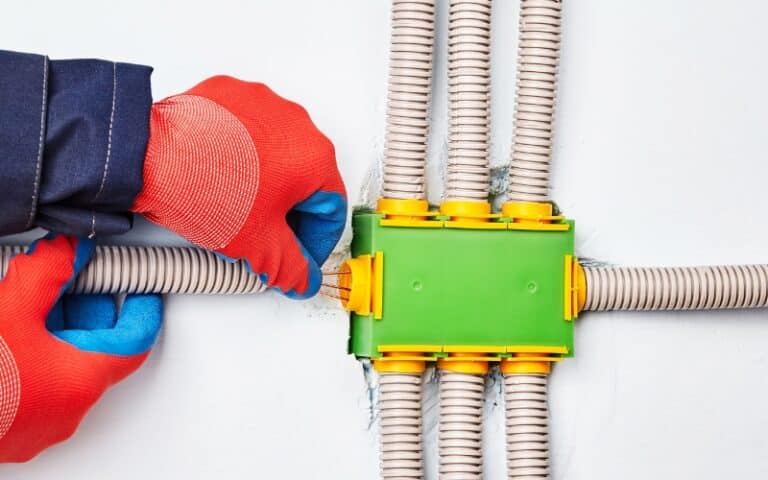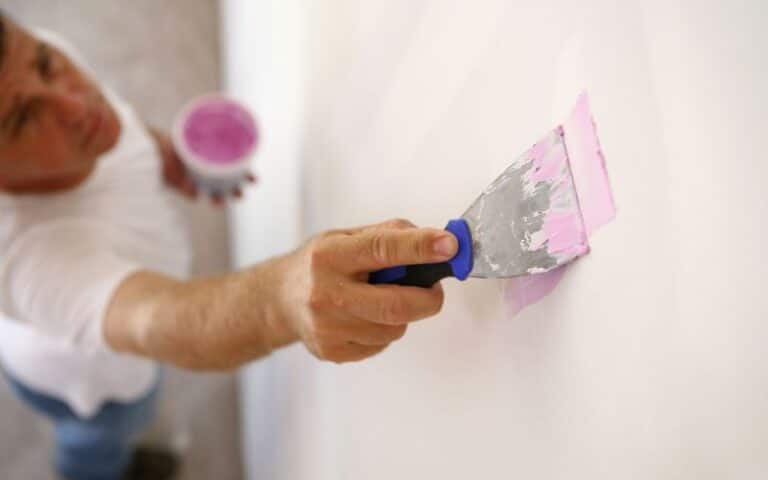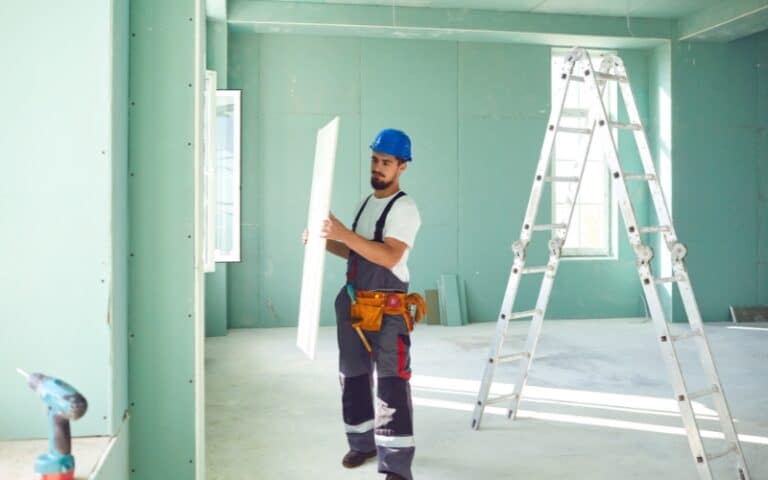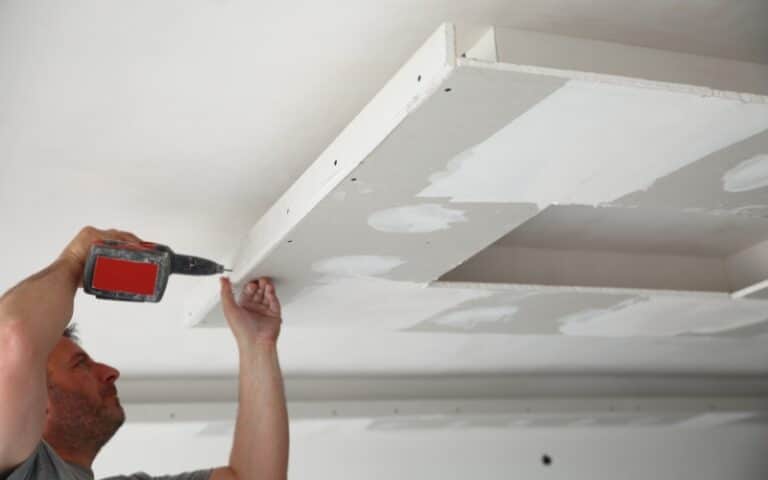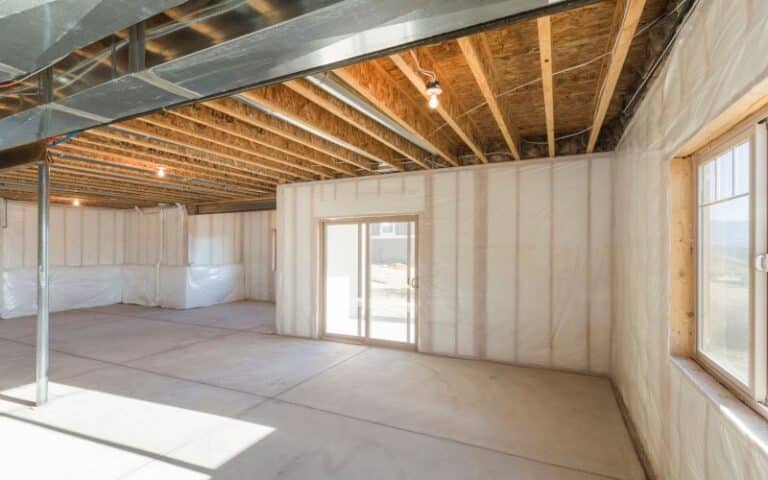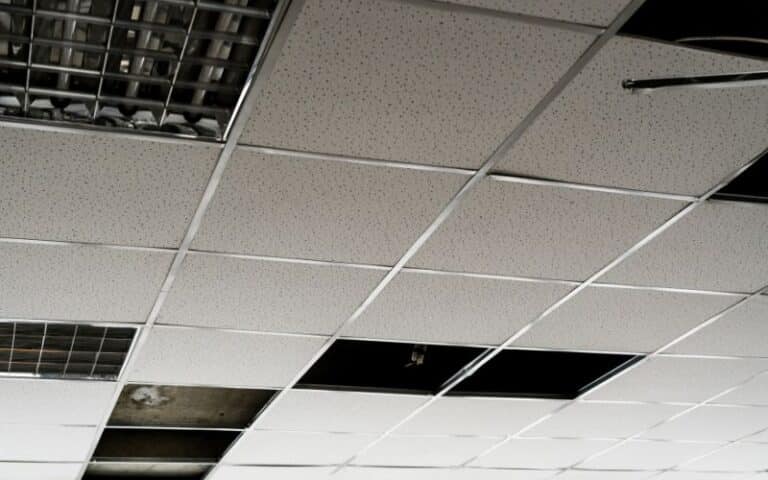If you intend to create a mount point where there isn’t a wall stud behind the drywall, then you need a drywall anchor. It will be vital in holding stud pictures, artworks, and mirrors.
Although they are effective and the best for mounting objects on drywalls, the question remains: can you use drywall anchors in concrete?
It would be best if you did not use drywall anchors in concrete walls because drywalls are thin and hollow, which is why their anchors are also weak. However, the best anchor for concrete walls is the top-rated wedge anchor with its awesome fastening on the wall. Using a wedge anchor on a brick or hollow wall is also not advisable.
As we progress in this article, we will see if drywall anchors are compatible with concrete walls, the best anchors for concrete walls, and how you should anchor on concrete walls.
Ready for a Drywall Quiz?
Can Drywall Anchors Be Used in Concrete?

As stated above, you can not use drywall anchors on concrete because they are just too weak by design to fit into concrete walls.
Even the strongest drywall anchors are not suitable for use on a concrete wall. The best drywall anchors you can rely on are threaded and molly bolt wall anchors.
#1. Threaded Anchor
Threaded anchors also go by the name self-drilling anchors or E-Z anchors. And this is the right pick for you if you are after ease and efficiency.
With the point on end, you can very well tap them into drywall, and with just the right screwdriver, you can drive them into the wall.
An average threaded anchor can hold a weight of 50 pounds. However, I am partial towards the molly bolt anchor; it remains my favorite.
#2. Molly Bolt Anchor
You can call it a molly bolt anchor or a classic molly bolt. If you are in a dire situation where you aren’t sure what to do, pick the molly bolt.
Other anchors include screw-in anchors, toggle bolts, and many others. However, only some of these can compare to the molly bolt anchor, which is my favorite.
After purchasing hollow wall anchors, you should be able to identify three things upon opening the box when it arrives.
The three things are;
- First, ensure that the box you receive carries hollow wall anchors specifically for drywall.
- Then confirm that they are of the required sizes for the drywall. Usually, they are ⅜ to ⅝-inch in thickness, but the other materials are thinner, like the hollow door.
- Please pay attention to the drill bit size given as a recommendation and try hard to get it.
What Anchors Can I Use in Concrete?
To identify what anchor will be suitable for use in concrete, you should first be able to tell the difference between a male and female anchor.
A male anchor is identifiable because it attaches to concrete by nuts and washers put through a fixture in the hole you drill.
But a female anchor is inserted into the hole that you drill into the concrete, and then you will put the fixture over this hole.
Next, you will insert the bolt through this fixture into the space to the anchor. To put the space for the female, you will need a setting tool.
Below are some anchors that you can use in concrete:
#1. Wedge Concrete Anchor
The name comes from wedges that can open up large to over 1/16 inch at the base when you tighten the bolt.
The ability to resist corrosion, easy insertion and strength are why the male is more common. It is a stud having the appearance of two adjoining pieces.
The top piece is threaded, and the bottom piece is clip-like with wedges, which you will find just between the concrete wall with a hole and the stud.
So, if you are dealing with a heavy shear application or heavy load, wedge anchors are just what you need.
As the heavy-duty seismic wedge holds, you use them in areas with frequent or high reports of seismic activity.
Concerning wedge anchors, remember that:
- Your anchor’s diameter should equal the size of the holes you drill into concrete for your anchor.
- You are not to use wedge anchors on stone, brick, or mortar but instead on excellent concrete.
#2. Concrete Sleeve Anchor
These only consist of male fasteners with an expander sleeve on the top, enveloping the threaded bolt. Then you will tread the anchor through this fixture and the hole.
Turning the bolt through this sleeve will cause this sleeve to flare as much as ⅛ inches, establishing a hold. It is an anchor for concrete, stone, and brick.
#3. Strike Anchor
It also goes by hammer drive, hammer drive pin anchor, hammer set, and metal hit. It is also a male holder for attaching lightweight fixtures to concrete.
It is an impact expansion holder with a tubular frame with a drive pin from the tubular covering. The hole you will drill will be the exact diameter of the strike anchor.
The good thing with strike anchors is that you can quickly install long runs of fixtures. However, after installation, you cannot remove it.
#4. Split Drive Anchor
The power and strength of this device lie in its resilient nature of the split drive anchor. They are male anchors of hard carbon steel and a split expanded base.
As you hammer the anchor into the hole you drilled, you compress the split base. It will help maintain pressure outwards on the hole wall, giving its holding power to the split drive anchor.
Note also that while installing the split drive anchor:
- The anchor’s diameter should be the same size as that of the hole
- It should be able to anchor lightweight stuff to brick, block, or concrete.
#5. Drop-In Concrete Anchor
Most times, it is confused with wedge anchors since it expands in the same way. It is a female anchor you must place in the hole you drill.
It would be best to use the drop-in setting tool consisting of a steel rod and one of the ends necked down to plug the anchor’s base.
Like the wedge anchor, this anchor is for solid concrete alone and can not exhibit its full potential on bricks, mortar, blocks, or stone.
Note that your anchor diameter must match the size of the hole that you intend to drill into the concrete.
Below is a table that shows the anchor diameter as well as the hole size:
| Anchor Diameter (Inches) | Fixture Hole Size (Inches) |
|---|---|
| 1/4 | 5/16 |
| 5/16 | 3/8 |
| 3/8 | 7/16 |
| 1/2 | 9/16 |
| 5/8 | 11/16 |
| 3/4 | 7/8 |
| 7/8 | 1 |
| 1 | 1-1/8 |
| 1-1/4 | 1-3/8 |
What is the Strongest Anchor for Concrete?
The strongest anchor for concrete is the wedge concrete anchor. It is mainly used for solid concrete applications and is not advisable for block or hollow walls.
Flat and round head sleeve anchors are the best, or the female anchors with bolt heads that you can insert into the anchor.
Note that the concrete anchors are light-duty, medium-duty, and heavy-duty, depending on their weight.
The light-duty anchor can carry hangings weighing up to 50 pounds. In contrast, the medium-duty can carry hangings with a weight of 200 pounds.
How Do You Anchor Something to a Concrete Wall?
If you are trying to anchor something light and easy, the Hammer-set anchors are more suitable for the task.
All you need to do is drill a hole into the concrete wall, hold the fixture you intend to fasten over, and then use the hammer to push the anchor into the hole.
As you keep driving the pin-down, the sleeve will keep expanding outwardly. And as it does so, it will trap the anchor firmly in the hole.
Furthermore, you can also decide to use a Soft-metal shield but when installing it, ensure you pay attention to the size of the hole.
If the hole is too small, you will crush the shield as you try to tap it in. But if it is too large, it will fail to balance and keep spinning in the hole.
Another way to anchor something on a wall is by using Concrete screws, commonly known by the trade name Tapcon. For solid attachment, I will recommend the use of a drill bit.
Ensure you drill ¼ inch more profoundly than the original screw length to avoid a bottom out when you decide to put a screw into it.
The Powder-actuated fasteners are a .22-, .25-, and .27-caliber pistol that can fire a hardened nail into concrete. It is a dangerous tool and should only be used to fasten poured concrete.

